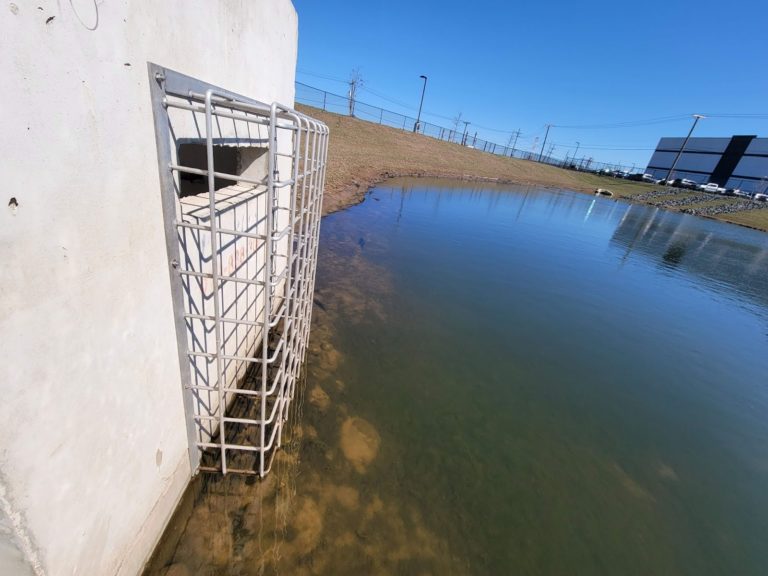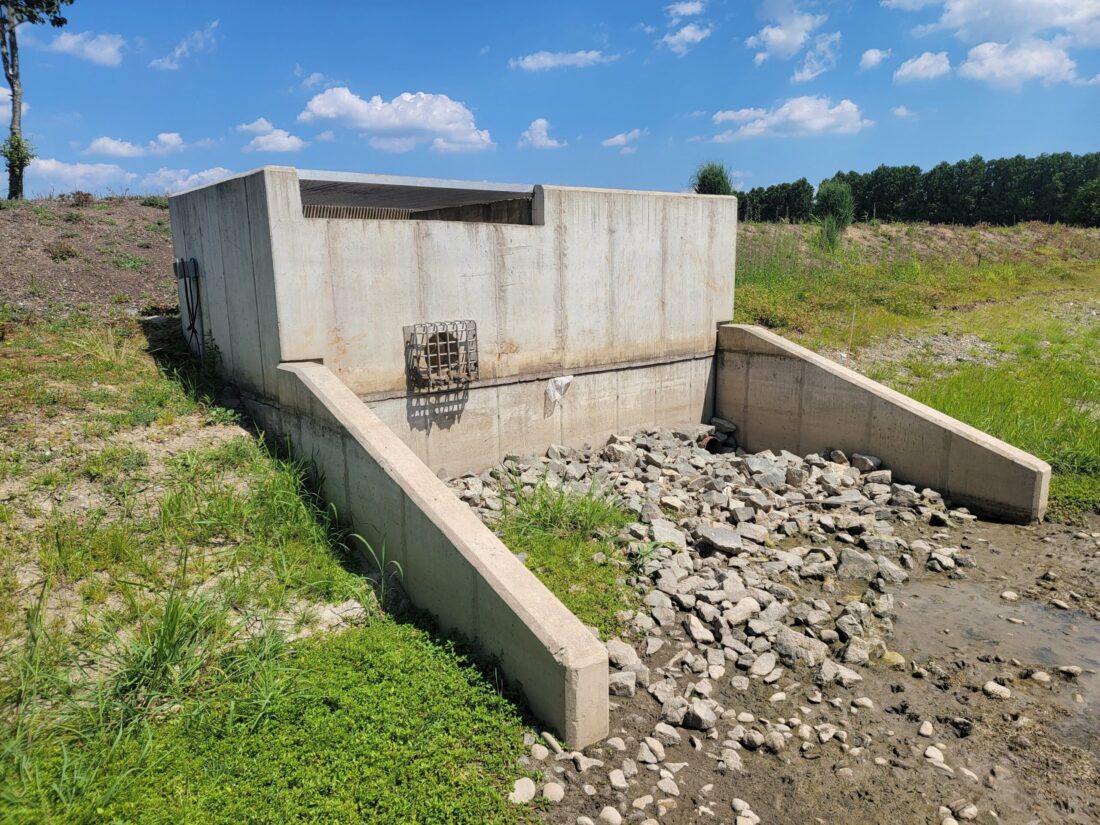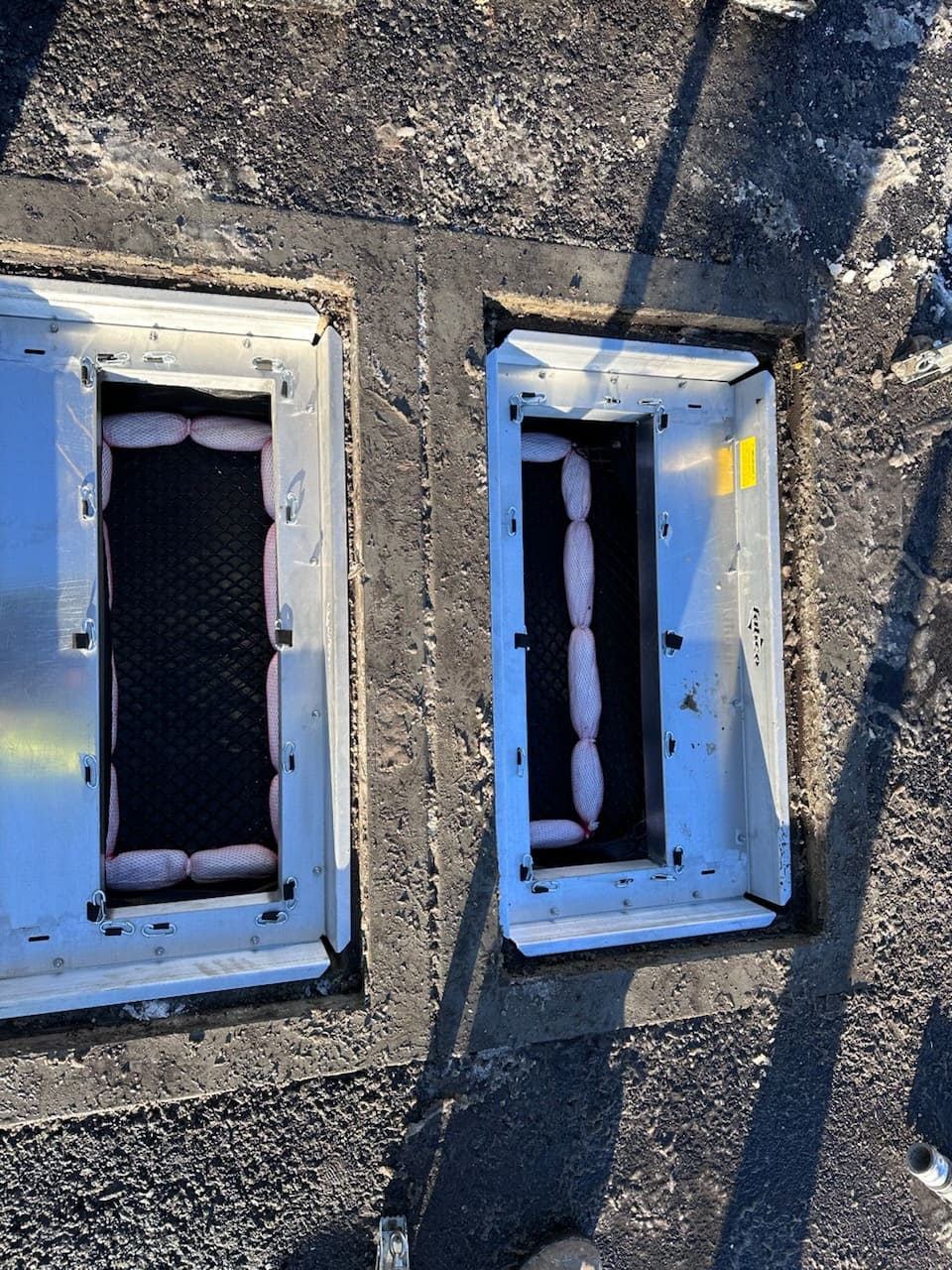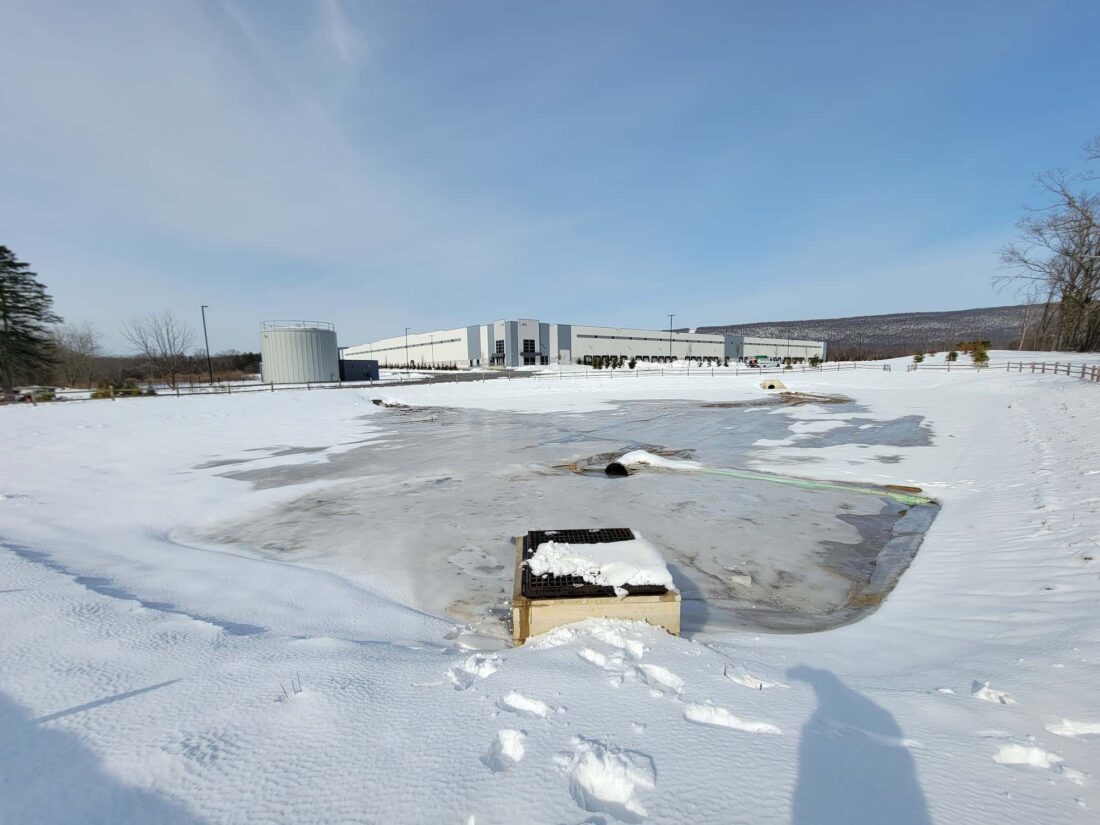
Detention Basin Trash Racks
Last Updated on June 16, 2022 by Stormwater Compliance Solutions
Maintaining proper water levels in detention basins, underground detention basins, and wet ponds is dependent on free-flowing outlet control structures (OCS). Water velocity and flow directs water to the outlet control structure where it leaves the basin at a controlled rate through an orifice or weir. The orifice or weir should always be protected by a trash rack. All OCS tops should have a grate or a trash rack on it for safety and to keep debris from entering the outlet pipe.
The purpose of the trash rack is to keep floating debris away from the orifices and weirs to prevent clogging. The greater the surface area of the trash rack, the greater ability it has to hold debris while allowing water to discharge properly. Trash racks require routine maintenance to remove accumulated debris.
Trash racks must be designed so they do not act as a hydraulic control for the basin by restricting flow or increasing velocity to the OCS. All trash rack designs should follow the local or state design criteria that is established. These may be outlined in state best management practices (BMP) guidelines but sometimes the jurisdiction is given to a soil conservation district or watershed group, depending on location.
Stormwater debris screens should be made of a non-corrosive material such as aluminum or stainless steel. Aluminum works well for both strength and cost. Trash racks should be made of welded bar stock, strong enough to withstand the applications in which they are being placed. In general, 3/4” bar stock is recommended and TIG welded in a set grid pattern. Square, evenly spaced grid patterns are preferred.
TRASH RACK GEOMETRY
Trash racks should aways be three dimensional in either square, rectangle or triangular configurations. These 3-dimensional designs have a greater surface area to collect material and to reduce velocity. Triangular shaped trash rack screens are a preferred design because the debris tends to fall off or roll off of the trash rack after the storm event. One dimensional trash racks placed directly over orifices or weirs are prone to clogging.
The minimum orifice diameter on an OCS is generally between 2.5 to 4 inches depending on the state. Orifices below the water quality design storm elevation are normally protected with 1” parallel bar spacing. For orifices above the WQDS elevation, the spacing is the diameter/3 or the width of the weir/3. In general, 6”x6” spacing is maximum on most normal stormwater control systems.
TRASH RACK MAINTENANCE
The purpose of the trash rack is to keep the orifice from clogging with debris and reduce the passage of floatable TSS downstream to streams, rivers, or lakes. These devices require maintenance. They should be cleared of debris whenever present. This type of maintenance is usually minor and is done on a routine basis. The larger the trash rack geometry and size, the longer it can last before being clogged. In site specific areas such as shopping malls, campuses, or industrial areas with known high quantities of vegetative debris or floatable trash , trash rack size should be increased.
Stormwater Treatment is an ongoing process that begins with the design of stormwater control devices and carries through to the inspection and maintenance cycle. Good designs lead to reduced costs of overall maintenance, and proper O&M procedures ensure the BMP will last for decades.
Please call one of our stormwater experts to discuss our design procedure for trash rack fabrication and installation.




